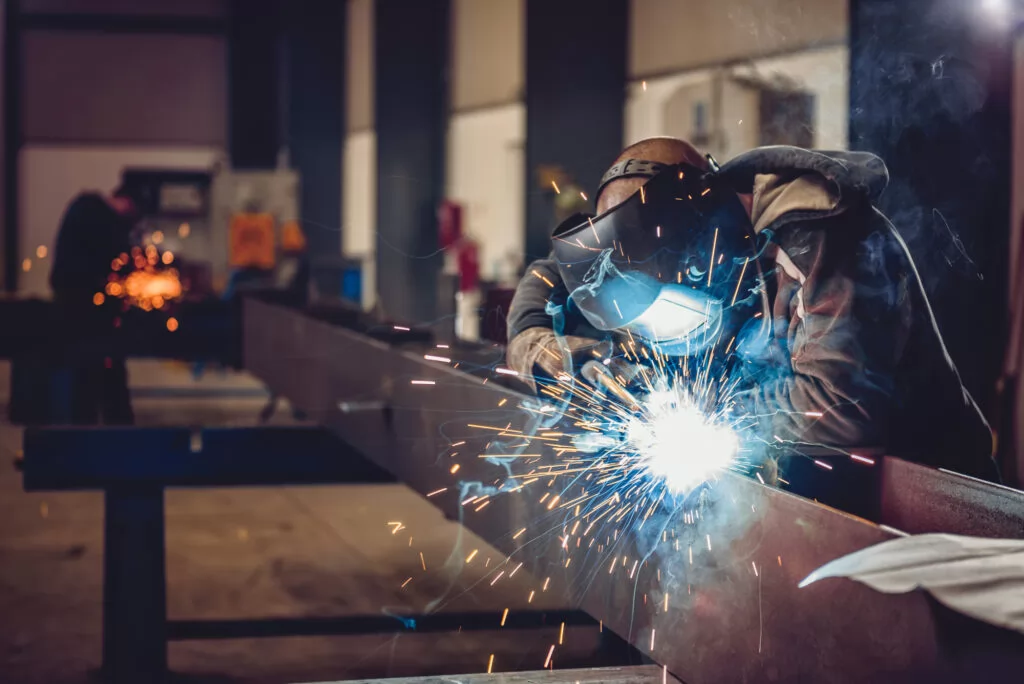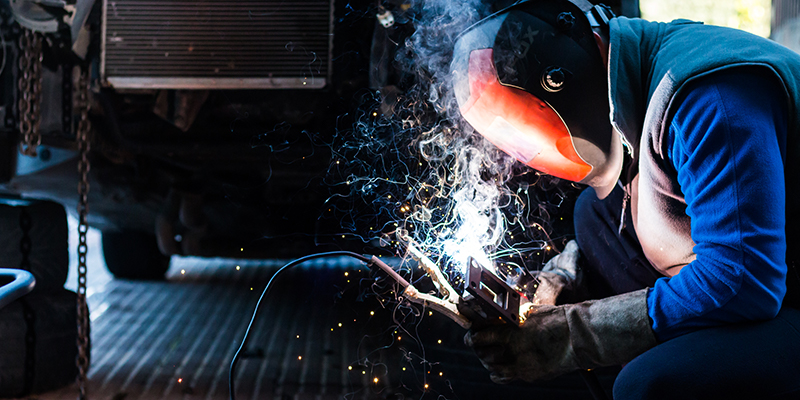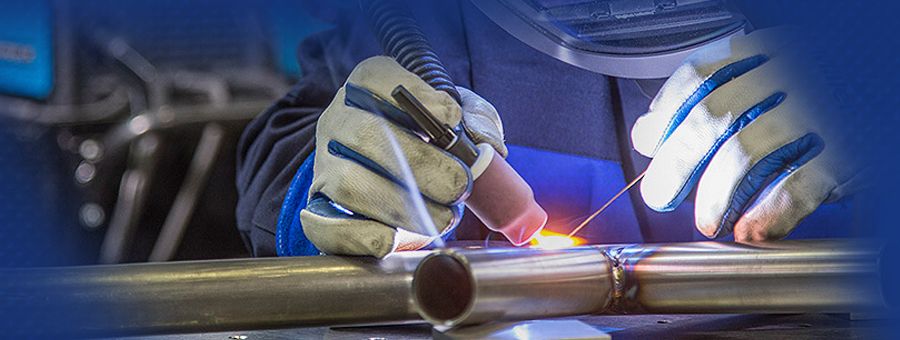Common Welding Repair Issues and Exactly How to Address Them Effectively
Welding repair services usually come across a series of concerns that can endanger the integrity of the end product. Common issues consist of inadequate penetration, porosity, and misalignment, among others. Each flaw presents unique obstacles that call for certain techniques for resolution. Understanding these concerns is essential for welders aiming to enhance their results and abilities. This conversation will certainly discover these common welding repair issues and effective techniques to resolve them.
Inadequate Infiltration
Insufficient penetration takes place when the weld steel falls short to totally fuse with the base product, causing weak joints and possible architectural failures. This issue frequently comes from not enough warm input, inaccurate electrode angle, or inappropriate welding speed. Welders might encounter inadequate infiltration because of a miscalculation of the necessary specifications for a certain material thickness or kind. Furthermore, contamination on the base material's surface area can impede efficient bonding, aggravating the trouble. To attend to inadequate penetration, welders ought to guarantee ideal settings on their equipment and keep a clean work surface. Routine evaluation of welds is suggested to recognize any shortages early, permitting timely modifications and the prevention of jeopardized architectural honesty in welded assemblies.
Porosity
Porosity is a common issue in bonded joints that manifests as tiny gas bubbles caught within the weld steel. This issue can jeopardize the honesty of the weld, resulting in minimized stamina and possible failing under stress. Montana Mobile Welding and Repair Welding. Porosity normally develops from contamination, wetness, or incorrect welding strategies, which allow gases to escape right into the liquified weld swimming pool. To deal with porosity, welders ought to ensure proper surface area preparation, maintain a tidy working atmosphere, and utilize appropriate welding specifications. Furthermore, choosing the best filler material and shielding gas can mitigate gas entrapment. Regular inspection and screening of welds can help identify porosity early, ensuring timely rehabilitative activities are taken, thereby protecting the quality and reliability of the bonded structure
Misalignment
Misalignment in welding can arise from numerous aspects, including improper arrangement and thermal growth. Recognizing the root creates is important for efficient resolution. A number of modification strategies are readily available to straighten components and assure architectural honesty.
Reasons of Imbalance
Welding imbalance usually originates from a range of underlying problems that can endanger structural honesty. One main cause is inappropriate fit-up of components before welding, which can bring about spaces and irregular surfaces. Variations in thermal expansion throughout the welding procedure can likewise cause distortion, particularly if the products being signed up with have various coefficients of expansion. In addition, insufficient clamping and fixturing may fall short to hold parts securely in position, causing activity during welding. Poorly conserved equipment, including welding machines and devices, might present inconsistencies in the weld grain, further contributing to imbalance. Driver error, stemming from insufficient training or experience, can also play a substantial role in producing misaligned welds.

Adjustment Methods Available
Resolving misalignment effectively needs a mix of restorative techniques tailored to the details concerns available. One typical approach is the usage of jigs or fixtures to hold components in the appropriate position throughout welding, ensuring regular placement. Furthermore, pre-heating the products can help decrease distortion and improve fit-up. For substantial imbalance, mechanical adjustment methods, such as using hydraulic jacks or clamps, can be employed to remedy the position before welding. Post-weld warm treatment may also be essential to soothe stress and anxieties triggered by misalignment. Careful inspection and adjustment throughout the configuration stage can avoid imbalance issues from coming to be considerable troubles, advertising a smoother welding process and improving total structural integrity.
Distortion
Distortion is a typical difficulty in welding that can arise from different aspects, consisting of irregular cooling and heating. Understanding the root causes of distortion is vital for implementing effective prevention methods. Resolving this problem not just boosts structural stability however additionally improves the overall quality of the weld.
Causes of Distortion
When subjected to the extreme heat of welding, materials frequently go through changes that can lead to distortion. This sensation mostly arises from thermal development and tightening during the welding procedure. As the weld area warms up, the material expands; upon cooling, it gets, which can develop inner tensions. On top of that, irregular heating across a work surface can exacerbate these stress and anxieties, causing bending or bending. The sort of material likewise plays a significant function; metals with differing thermal conductivity and coefficients of development may react differently, causing unpredictable distortions. Furthermore, inadequate joint design and insufficient fixturing can add to misalignment during welding, enhancing the possibility of distortion. Comprehending these reasons is vital for efficient welding repair work and avoidance strategies.
Prevention Techniques
Reliable avoidance techniques for distortion during welding concentrate on regulating warmth input and making certain correct joint style. Keeping a constant warm input aids to minimize thermal growth and contraction, which can result in distortion. Utilizing strategies such as pre-heating the workpiece can additionally decrease the temperature gradient, promoting consistent heating. Furthermore, picking appropriate joint styles, such as T-joints or lap joints, can boost stability and reduce stress and anxiety concentrations. Applying appropriate fixturing to protect the work surfaces in location better help in preserving placement throughout the welding process. Ultimately, staggered welding series can disperse warm a lot more equally, stopping localized distortion. By using these techniques, welders can considerably lower the likelihood of distortion and boost the general high quality of their welds.
Cracking
Cracking is a typical problem run into in welding repair services, usually resulting from numerous elements such as improper air conditioning prices, product option, or inadequate joint prep work. The event of cracks can considerably endanger the integrity of the weld, bring about prospective failures during procedure. To address this issue, welders should initially assess the origin, guaranteeing that products are suitable and appropriately picked for the details application. Furthermore, regulating the air conditioning price during the welding process is crucial; fast cooling can induce stress and lead to cracking. Proper joint style and prep work likewise add to minimizing the danger. Implementing these strategies can enhance weld quality and resilience, ultimately lowering the chance of cracking in finished weldments.

Incomplete Combination
A substantial issue in welding repairs is insufficient combination, which occurs when the weld steel does not appropriately bond with the base material or previous weld passes - Montana Mobile Welding and Repair Fabrication. This defect can bring about weaknesses in the joint, potentially jeopardizing the honesty you could try this out of the welded structure. Elements contributing to incomplete fusion consist of inadequate warm input, improper welding method, and contamination of the surfaces being signed up with. To resolve this concern efficiently, welders need to guarantee proper pre-weld cleansing and surface preparation, in addition to change their welding specifications to accomplish appropriate infiltration and fusion. Normal evaluation throughout the welding procedure can additionally help recognize insufficient fusion early, permitting for prompt rehabilitative actions to boost the total high quality of the weld
Overheating
While welding fixings can enhance structural honesty, overheating offers a considerable challenge that can cause product destruction. Too much heat during welding can change the mechanical properties of steels, causing lowered toughness, boosted brittleness, and bending. This sensation is specifically critical in high-stress applications where structural reliability is critical. Determining getting too hot can include aesthetic assessments for discoloration or distortion, along with monitoring temperature throughout the welding process. To minimize the risks related to getting too hot, welders must use ideal strategies, such as controlling warm input, changing travel rate, and utilizing suitable filler products. Additionally, implementing pre- and post-weld heat therapies can aid restore product homes and improve the overall high quality of the repair work, making sure long-term performance and safety.
Often Asked Questions
What Are the Common Indicators of a Welding Problem?

Exactly How Can I Examine My Welds for High quality?
To test welds for high quality, one can use aesthetic evaluations, ultrasonic testing, and radiographic approaches. Each strategy assures structural integrity, determines flaws, and confirms adherence to defined criteria, ultimately enhancing YOURURL.com the reliability of the bonded joints.
What Safety and security Safety Measures Should I Take While Welding?
When welding, one ought to prioritize safety by putting on ideal personal safety tools, making sure proper ventilation, securing combustible products away, maintaining a clean office, and understanding environments to stop injuries and crashes.
Can I Repair a Weld Without Remodeling the Entire Joint?
Fixing a weld without renovating the entire joint is feasible, depending on the damages (Belgrade Welding). Techniques such as grinding, including filler material, or utilizing a welding procedure can successfully resolve certain problems while protecting the surrounding structure
What Devices Are Important for Effective Welding Fixes?
Important tools for efficient welding repair work include a welding machine, cable brush, grinder, protective equipment, clamps, and filler materials. Each tool plays an essential duty in ensuring high quality and security throughout the repair work procedure. Porosity commonly develops from contamination, moisture, or incorrect welding strategies, which permit gases to get away right into the molten weld pool. Improperly conserved tools, including welding machines and tools, might present incongruities in the weld bead, further adding to misalignment. When subjected to the extreme warmth of welding, products commonly undertake modifications that can lead to distortion. Splitting is an usual concern experienced in welding repair services, frequently resulting from different aspects such as incorrect air conditioning rates, product selection, or poor joint preparation. A significant issue in welding repair work is incomplete fusion, which occurs when the weld steel does not effectively Look At This bond with the base product or previous weld passes.
Comments on “Field-tested steps to avoid porosity in welds with Belgrade Welding”